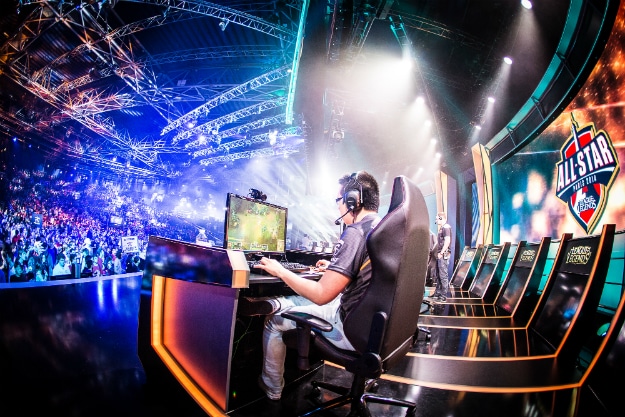In South Korea eSports are a national pastime, and for many participants and fans alike, a way of life. The top players are household names and genuine stars. The Korea E-Sports Association (KeSPA) was founded in 2000 with the official sanction and approval of the Ministry of Culture, Sports and Tourism and millions routinely watch the biggest events on TV.
In other major markets, including the US, Europe, and Japan, the popularity of eSports has been slower to catch on. eSports, also known variously as competitive gaming (although the majority of games are competitive) and pro-gaming (although some taking part are amateurs) refers in general terms to large-scale, organized gaming competitions played in front of an audience. They might not be anything like as mainstream as they are in South Korea but eSports are gradually gaining in prominence in the US and elsewhere.
Some are heavily backing the growth in eSports within the UK. Activision Blizzard, whose StarCraft and World of Warcraft titles figure in some of the scene’s biggest competitions, recently announced the formation of a dedicated eSports division, chaired by the former CEO of ESPN. Then, at the start of the year, the company announced its acquisition of major sporting event organizer Major League Gaming for an estimated $46 million.
Activision Blizzard’s Bobby Kotick said: “Our acquisition of Major League Gaming’s business furthers our plans to create the ESPN of eSports. MLG’s ability to create premium content, its proven broadcast technology platform – including its live streaming capabilities – strengthens our strategic position in competitive gaming. MLG has an incredibly strong and seasoned team and a thriving community. Together, we will create new ways to celebrate players and their unique skills, dedication and commitment to gaming. We are excited to add Sundance and the entire MLG eSports team to our competitive gaming initiatives.”
So is this investment a gamble or is it likely to reap major dividends as eSports become more and more mainstream in the US over the next few years?
There are certainly challenges ahead. For investors and commercial entities, these challenges lie not only in boosting the numbers who are interested in watching and supporting eSports, but also how to monetize that support. According to figures from market research firm Newzoo, the average eSport fan is worth $2.40 annually to the industry as a whole. This compares quite unfavorably to the $19 that each fan is worth to the National Basketball Association but is still up on he estimated worth of $2.22 at the start of 2015. Newzoo estimates that the figure could grow to $4.63 by 2018, even given a reasonably conservative growth.
This value can be realized in a number of different ways; via pay-per-view, advertising, live event tickets, merchandising and more. As the numbers of people interested in eSports continue to grow however, the revenue-per-fan figure will also grow in areas such as advertising and the amount that people are willing to pay to watch and be involved. Some 205 million people watched or played eSports in 2014 according to ESPN. Asia still has the biggest market share but North America and Europe can now claim more than 28 million eSports fans and this figure is growing by 21% a year.
With added investment and other measures, including expanding the gaming genres featuring in competitions, better regulation and the settling of media rights ownership, the field of eSports only looks to get bigger. The days when it can compete with traditionally established sports might be a long way off yet but it does look like eSports will become a mainstream viewing experience over the course of the next decade.
The Future Of eSports – Will It Go Mainstream?



COMMENTS